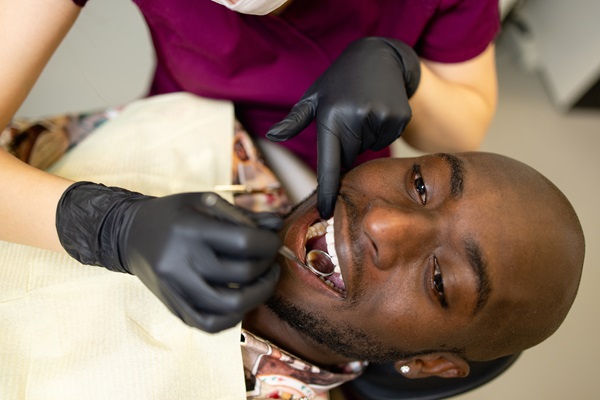How a Cosmetic Dentist Can Restore Teeth with a Dental Crown

A dental crown is a cap that fits over a person’s tooth. A crown is commonly used to restore decayed, missing, or cracked tooth structure. Whether a dental crown is ideal for you will depend on the condition of your teeth and the issue you are trying to fix. Read on to find out more about how crowns can restore damaged or decayed teeth.
Dental crown
A dental crown can be used to address a wide range of issues. It offers a stable, long-lasting solution for cosmetic and dental health concerns. Crowns can be made from various materials, including metal or porcelain. To determine the ideal material, the dentist will consider several things. These include the tooth’s location, function, patient’s preference, and color or shade of the tooth. A cosmetic dentist may recommend a porcelain crown because it looks like a normal, healthy tooth.
When is a dental crown needed?
A crown is usually placed over a decayed or damaged tooth. It protects what is left after the damaged portion of the tooth is removed. There are several reasons why a dentist may recommend a crown. A crown is often used to cover up a damaged tooth, which helps to keep bacteria from getting to the root of the tooth via a crack. A tooth can become damaged due to different reasons, such as trauma or an underlying dental issue.
A crown also holds together parts of a cracked tooth and restores its appearance, shape, and function. For a chipped tooth, a crown can aid in covering up any of the jagged edges. It is crucial to seek treatment for damaged, cracked, or worn teeth as soon as possible. This will help to avoid tooth loss and the need for more complex and costly treatment in the future.
Sometimes, it is impossible to repair a tooth with a dental filling when the cavity is too large. To support a dental filling, there must be adequate tooth structure. If there is extensive decay, a crown may be needed to support the tooth. In such cases, the crown acts as a splint for the tooth.
How is a dental crown placed?
A dental crown fits over and replaces the entire visible part of a tooth that lies at and above the gumline. A crown usually encases the tooth. It then becomes its new outer surface. This dental restoration covers a tooth and helps to restore it to its normal shape and size.
It also makes the tooth stronger and enhances its appearance. The procedure to place a dental crown on a tooth involves two dental visits. During the first visit, the dental provider will examine and prepare the tooth. The crown is usually placed during the second visit.
Caring for your dental crown
If you have a damaged or decayed tooth, you should consult with your dentist to find out more about dental crowns. Your dentist will be able to determine if a dental crown is the right treatment option for you. But after getting a crown, you should continue to follow good oral hygiene practices. Doing so will help to avoid many complications.
Are you considering getting a dental crown in the Delray Beach area? Get more information at https://www.careonedentalfl.com.
Check out what others are saying about our dental services on Yelp: Dental Crown in Delray Beach, FL.
Related Posts
A dental crown is a cover that fits over the entire tooth, protecting it from damage. It can be made of porcelain or gold for aesthetic purposes, but most are constructed of metal. A crown is usually used to safeguard teeth that have already been broken or badly decayed. A dentist can evaluate if a…
Talking to your general dentist about your dental anxiety can help start your dental appointment the right way. This condition can prevent you from getting the right dental treatments. Keeping it at bay is possible during the visit. Here are the details on how your general dentist can help relieve your dental anxiety.This is an…
A key part of a general dentist's job is helping patients protect their teeth from damage, wear, and decay. Preventing dental problems can help patients save time, trouble, discomfort, and money. Here is a closer look at how general dentists help patients keep their teeth in good condition.General dentists may provide the following preventive services…
General dentists are some of the most visited professionals in their field. The American Dental Association recommends that people as young as one year old maintain a biannual checkup schedule. Their primary aim is to preserve or improve patients' oral health, which they do in various ways. Let us look at six of them.Depending on…
